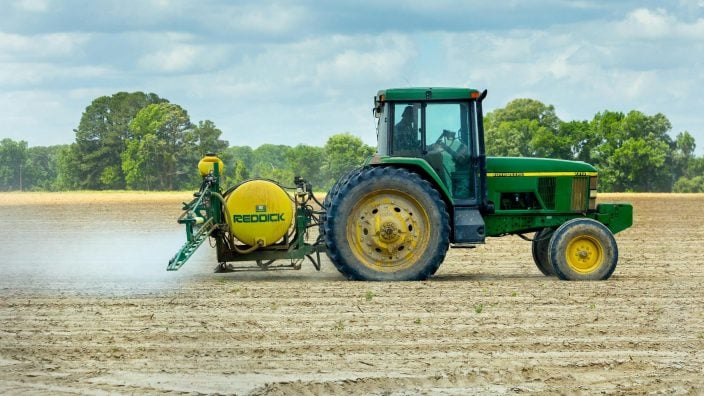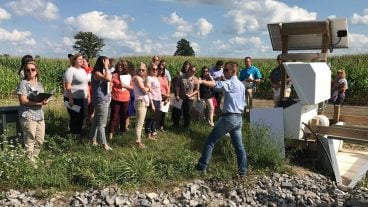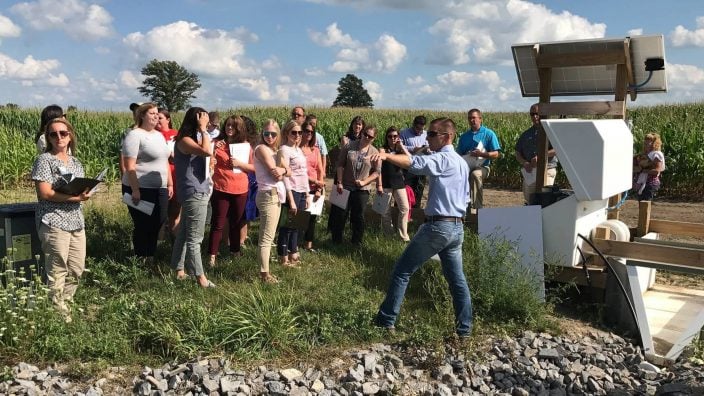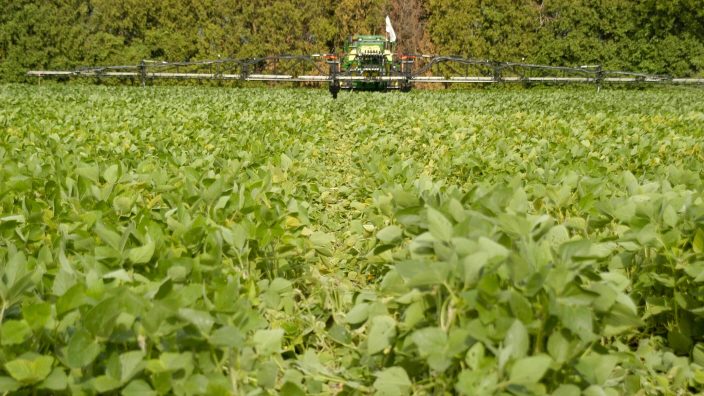Ohio Farm Bureau shapes 2026 policy at annual meeting
Delegates discussed many topics impacting agriculture including farmland preservation, local foods, and succession planning.
Read MoreDue to changes in Endangered Species information, Enlist One and Enlist Duo cannot be used in 12 Ohio counties: Athens, Butler, Fairfield, Guernsey, Hamilton, Hocking, Morgan, Muskingum, Noble, Perry, Vinton and Washington.
New policy by the U.S. Environmental Protection Agency will have an immediate negative impact on farmers in 12 Ohio counties. Calling it a reversal in “decades of practice,” EPA says it will further the agency’s compliance with the Endangered Species Act when evaluating and registering new pesticide active ingredients. This change took effect Jan. 11.
According to the Ohio State University Extension C.O.R.N. Newsletter, EPA issued a new seven-year registration for Enlist One and Enlist Duo, valid through January 2029, but made some detrimental changes to the products’ application guidelines.
“It’s great that EPA has renewed labels for the next seven years for a product line that is very important for soybean growers, but it comes with a whole host of new restrictions that we haven’t seen before with these products,” said Brandon Kern, senior director of state and national policy with Ohio Farm Bureau. “Growers looking for alternative options to dicamba have chosen Enlist soybeans for the 2022 growing season, and now that those purchases have already been made and the seed has been delivered, there are many concerns with these new limitations.”
Changes include a revised application cutoff for soybean growth stages, now “through R1” replaces “up to R2” on previous labels, and the addition of a slew of spray nozzles to the approved nozzle list. The most significant change for Ohio is that, due to changes in Endangered Species information, Enlist One and Enlist Duo cannot be used in 12 Ohio counties: Athens, Butler, Fairfield, Guernsey, Hamilton, Hocking, Morgan, Muskingum, Noble, Perry, Vinton and Washington.
“Ohio Farm Bureau and other state Farm Bureaus have been in close contact with each other and American Farm Bureau about this issue as we begin to understand more about the ramifications of some of these restrictions,” Kern said. “I think there is going to be a series of meetings and direct conversations with EPA and we look forward to sharing these concerns and hope that EPA understands how limiting this action will be for farmers across the country.”
EPA said that before these drastic changes in policy, in most cases it did not consistently assess the potential effects of conventional pesticides on listed species when registering new active ingredients. This resulted in insufficient protections from new active ingredients for listed species, as well as resource-intensive litigation against EPA for registering new active ingredients prior to assessing potential effects on listed species.
“This really couldn’t happen at a worse time for growers in these counties,” said Mark Loux, Ohio State University Extension herbicide specialist and one of the authors of the C.O.R.N. Newsletter. “We lack solid information on herbicide availability and price, and it’s a fluid situation, but it appears that glyphosate and glufosinate can be in short supply, and prices are high.”
In the C.O.R.N. Newsletter, Loux offers a few things to consider if your burndown plans for 2022 have been impacted by this EPA revision and some suggestions when looking for an alternative to Enlist One and Enlist Duo.
US EPA announced a new policy which requires a more robust review of agri-chemicals in relation to the Endangered Species Act, impacting farmers who had planned on using some Enlist products this year. Why was this policy created? Get answers from Ohio Farm Bureau Policy Counsel Leah Curtis.


Delegates discussed many topics impacting agriculture including farmland preservation, local foods, and succession planning.
Read More

The winners of the 2025 Ohio Farm Bureau Advocacy in Action Award are Dr. Sarah Ison of Clermont County and Tim Hesselbrock of Butler County.
Read More

Ohio Farm Bureau Treasurer Adele Flynn participated in the meeting, representing Ohio farmers.
Read More

A statement from Lorain County Farm Bureau Board of Trustees: No Mega Site, No Sewer, Keep It Rural
Read More

HB 10 ensures transparency around how imitation meat is labeled, along with restoring needed flexibility around the application of crop protection tools.
Read More

The network was established in fall 2015 on farms in Hardin and Hancock counties. Nearly 200 different tours and events took place on the three farms totaling nearly 4,000 visitors in its 10-year span.
Read More

Urge President Trump and Congress to act before the end of 2025 to provide immediate relief and long-term stability for America’s farmers and ranchers.
Read More

OFBF annual meeting delegates will discuss how or if current Farm Bureau policy should be modified in light of various property tax proposals.
Read More

Statewide, property taxes annually collect approximately $22 billion. Approximately ⅗ of property taxes are used to fund schools, while the remainder funds other local entities.
Read More

A proposal to import beef from Argentina comes on top of the government shutdown and ongoing economic pressures facing agriculture.
Read More